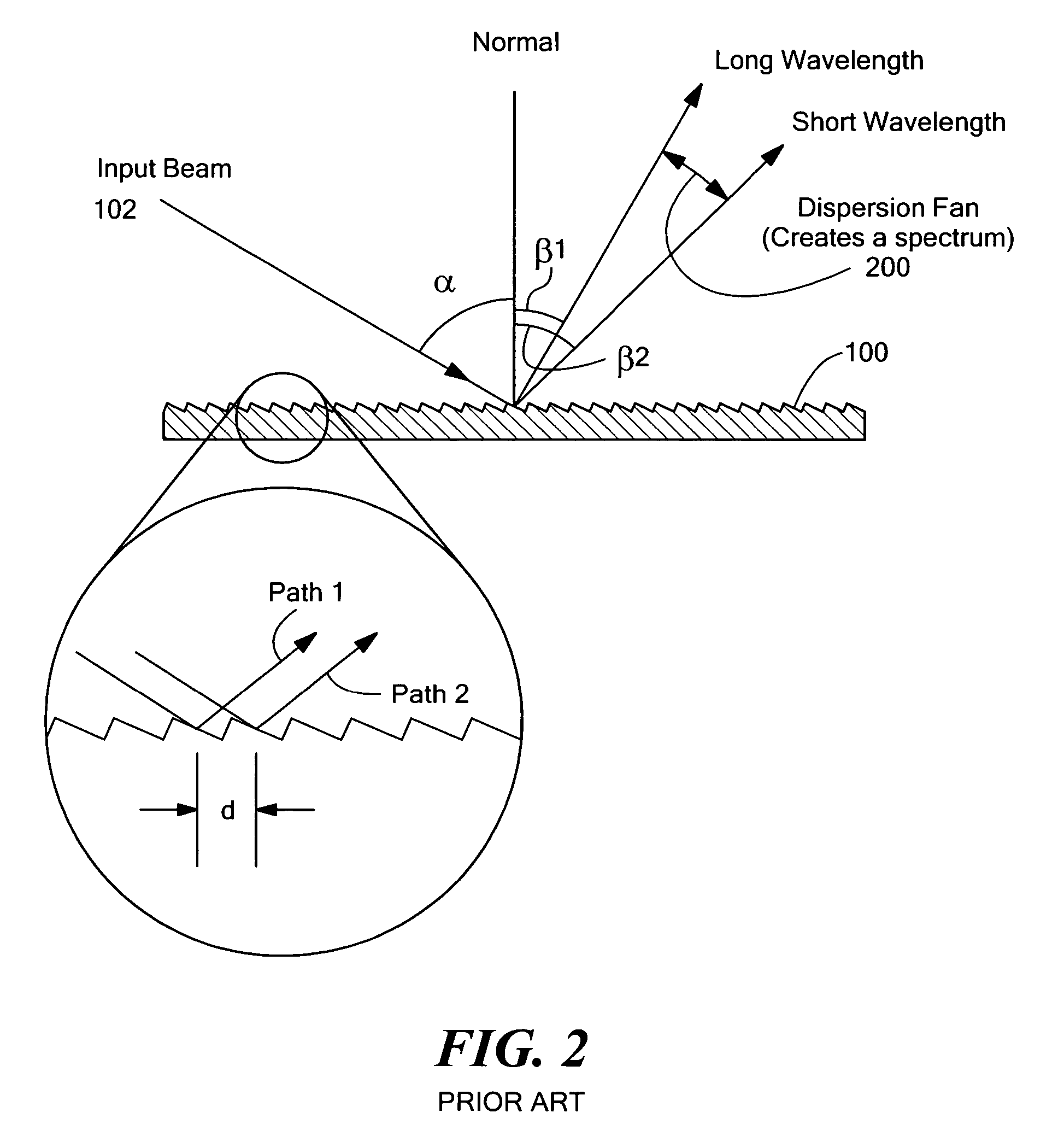Multi-channel, multi-spectrum imaging spectrometer
a multi-spectrum imaging and spectrometer technology, applied in the field of compact, multi-channel and/or multi-spectrum imaging concentric spectrometers, can solve the problems of large size of conventional spectrometers used for raman analysis, heavy laboratory-based instruments, and the inability to produce spectra of relatively limited wavelength ranges
- Summary
- Abstract
- Description
- Claims
- Application Information
AI Technical Summary
Benefits of technology
Problems solved by technology
Method used
Image
Examples
Embodiment Construction
[0036] The contents of U.S. Provisional Patent Application No. 60 / 602,747, filed Aug. 19, 2004, titled “Multi-Channel, Multi-Spectrum Imaging Spectrometer,” is hereby incorporated by reference.
[0037] For simplicity, visible light will be used to describe the operation of the prior art and the present invention. However, the present invention can be used with visible light and invisible light, such as near-infrared (NIR), short wave infrared (SWIR) and ultraviolet (UV) light, as well as other wavelengths of electromagnetic energy and combinations of visible and invisible energy, all of which are herein collectively referred to as “light” for simplicity.
Conventional Spectrometers
[0038] A typical spectrometer includes a slit or other light entry device, a light dispersing element for dispersing the incoming light into a spectrum, and an image plane, such as a screen or image sensor, on which the spectrum is projected. Most spectrometers use a diffraction grating as the light dispers...
PUM
 Login to View More
Login to View More Abstract
Description
Claims
Application Information
 Login to View More
Login to View More - R&D
- Intellectual Property
- Life Sciences
- Materials
- Tech Scout
- Unparalleled Data Quality
- Higher Quality Content
- 60% Fewer Hallucinations
Browse by: Latest US Patents, China's latest patents, Technical Efficacy Thesaurus, Application Domain, Technology Topic, Popular Technical Reports.
© 2025 PatSnap. All rights reserved.Legal|Privacy policy|Modern Slavery Act Transparency Statement|Sitemap|About US| Contact US: help@patsnap.com



